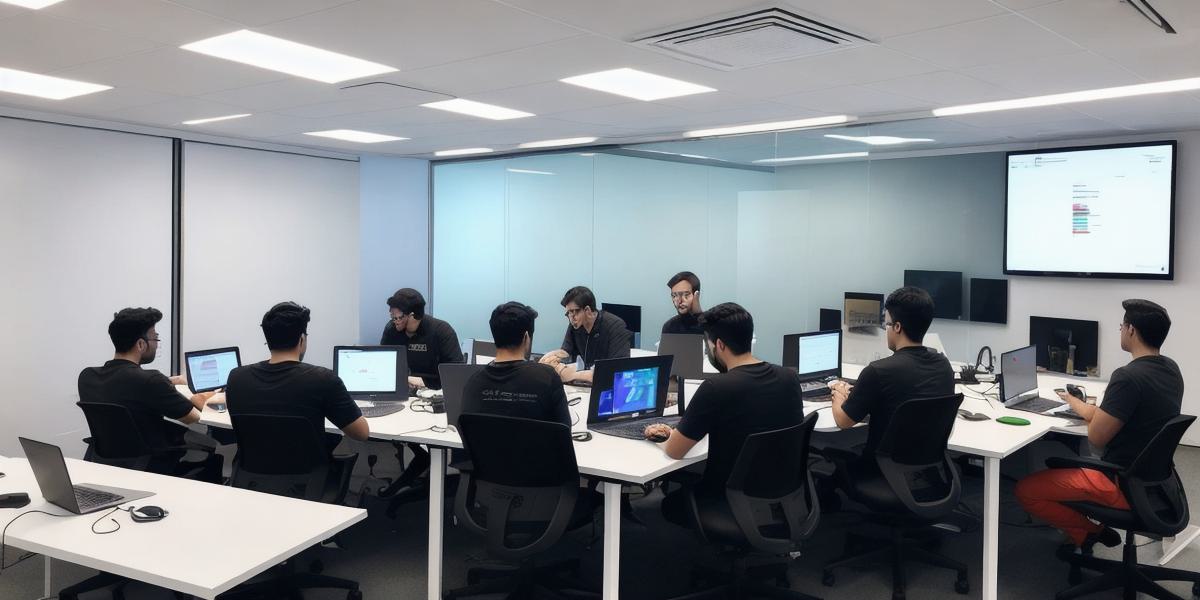Introduction:
Decentralized applications (dApps) have become increasingly popular in recent years, as people look for ways to decentralize the internet and take control of their data. One popular technology stack for building dApps is Vue.js, a progressive framework that provides a smooth user experience, and Web3, which enables secure, transparent, and tamper-proof transactions on a blockchain network. In this comprehensive guide, we’ll explore the ins and outs of building decentralized apps with Vue.js and Web3, including best practices, real-world examples, and tips for success.
Why Build Decentralized Apps with Vue.js and Web3?
Before diving into the technical aspects of building dApps with Vue.js and Web3, let’s explore why this technology stack is a popular choice. Firstly, Vue.js is an open-source framework that provides a simple, intuitive, and flexible user interface. It allows developers to build custom components, handle routing, and interact with APIs in a streamlined way. This makes it easy to create responsive and user-friendly dApps.
Secondly, Web3 enables secure, transparent, and tamper-proof transactions on a blockchain network. By using smart contracts, developers can automate complex business processes, store and manage data securely, and enable users to make decentralized payments without the need for intermediaries like banks or payment processors. This makes dApps built with Web3 highly secure and trustworthy.
Best Practices for Building Decentralized Apps with Vue.js and Web3
Now that we have a better understanding of why this technology stack is popular, let’s explore some best practices for building decentralized apps with Vue.js and Web3.
- Plan carefully: Before starting any project, it’s essential to have a clear plan in place. This includes defining the purpose of the dApp, identifying the target audience, and outlining the features and functionality that will be included. Having a well-defined plan will help ensure that the development process runs smoothly and that the final product meets the needs of the users.

- Use existing libraries and tools: There are many open-source libraries and tools available for building dApps with Vue.js and Web3. These can save developers time and effort by providing pre-built components, APIs, and other resources that make it easier to get started. Some popular options include Truffle for testing and deployment, Remix for development and debugging, and Gan for local blockchain development.
- Ensure security: Security is crucial for dApps built with Vue.js and Web3. This includes using secure coding practices, implementing robust authentication and authorization mechanisms, and conducting regular security audits to identify and address vulnerabilities. It’s also important to stay up-to-date with the latest security best practices and to incorporate them into the development process.
- Test thoroughly: Before launching a dApp built with Vue.js and Web3, it’s essential to test it thoroughly to ensure that it works as intended and meets the needs of the users. This includes testing for functionality, performance, usability, and security. It’s also important to conduct user testing to gather feedback and make improvements before launching.
- Consider the scalability: dApps built with Vue.js and Web3 should be designed with scalability in mind. This includes using efficient data structures, optimizing code for performance, and designing the architecture of the dApp in a way that allows it to handle large volumes of users and transactions.
Real-World Examples of Decentralized Apps Built with Vue.js and Web3
Now that we’ve covered some best practices let’s take a look at some real-world examples of decentralized apps built with Vue.js and Web3.
- DappRadar: DappRadar is a dApp that provides users with information about decentralized applications, including their popularity, activity, and usage metrics. It’s built using Vue.js and Web3 technologies and offers a user-friendly interface for exploring and discovering new dApps.
- CryptoKitties: CryptoKitties is a blockchain game that allows users to collect, breed, and sell digital cats. It’s built using Ethereum and Vue.js technologies and has become one of the most popular decentralized games in the world, with millions of active users and billions of dollars in transactions.
- District0x: District0x is a platform that allows anyone to create and manage decentralized applications. It’s built using Web3 technologies and offers a user-friendly interface for building and deploying dApps on the Ethereum blockchain.

Tips for Success
Finally, let’s wrap up with some tips for success when building decentralized apps with Vue.js and Web3.
- Stay up-to-date: The technology landscape is constantly evolving, and it’s essential to stay up-to-date with the latest trends, tools, and best practices in the field of dApp development. This includes following industry experts and influencers, attending conferences and workshops, and participating in online communities.
- Collaborate with others: Building decentralized apps can be a complex and challenging task, and it’s essential to collaborate with others to ensure that the project is successful. This includes working with other developers, designers, and stakeholders to share knowledge, ideas, and resources.
- Be patient: Building decentralized apps can take time, and it’s important to be patient and persistent in the face of challenges and setbacks. This includes setting realistic timelines, prioritizing tasks, and celebrating small victories along the way.
Conclusion
In conclusion, building decentralized apps with Vue.js and Web3 is a powerful and exciting field that offers developers the opportunity to build innovative, secure, and trustworthy applications on a blockchain network. By following best practices, using existing libraries and tools, ensuring security, testing thoroughly, considering scalability, staying up-to-date, collaborating with others, and being patient, developers can create dApps that meet the needs of their users and contribute to the growth of the decentralized web.
FAQs:
- What is Vue.js?
- Vue.js is an open-source framework for building user interfaces. It provides a simple, intuitive, and flexible way to create custom components, handle routing, and interact with APIs.
2. What is Web3?
- Web3 refers to the decentralized version of the web that uses blockchain technology to enable secure, transparent, and tamper-proof transactions on a network of interconnected nodes. It enables developers to build decentralized applications (dApps) that are highly secure and trustworthy.
- Vue.js is an open-source framework for building user interfaces. It provides a simple, intuitive, and flexible way to create custom components, handle routing, and interact with APIs.
- How do I get started with building dApps with Vue.js and Web3?
- To get started with building dApps with Vue.js and Web3, you’ll need to have some basic knowledge of web development, programming, and blockchain technology. You can also use existing libraries and tools like Truffle, Remix, and Gan to help you get started.
